13 Jeannette Glass Company Designs That Defined the Era
Founded in 1900, Jeannette Glass Company is remembered for its creative and colorful glassware. Its innovative designs captured the essence of the American home during the 20th century. Known for their fine craftsmanship, Jeannette’s pieces became synonymous with elegance and charm. The company’s legacy lives on through the timeless beauty of its glass designs. Let’s dive into the pieces that truly made a mark on history.
This post may contain affiliate links, which helps keep this content free. Please read our disclosure for more info.
Jeannette Glass Cherry Blossom
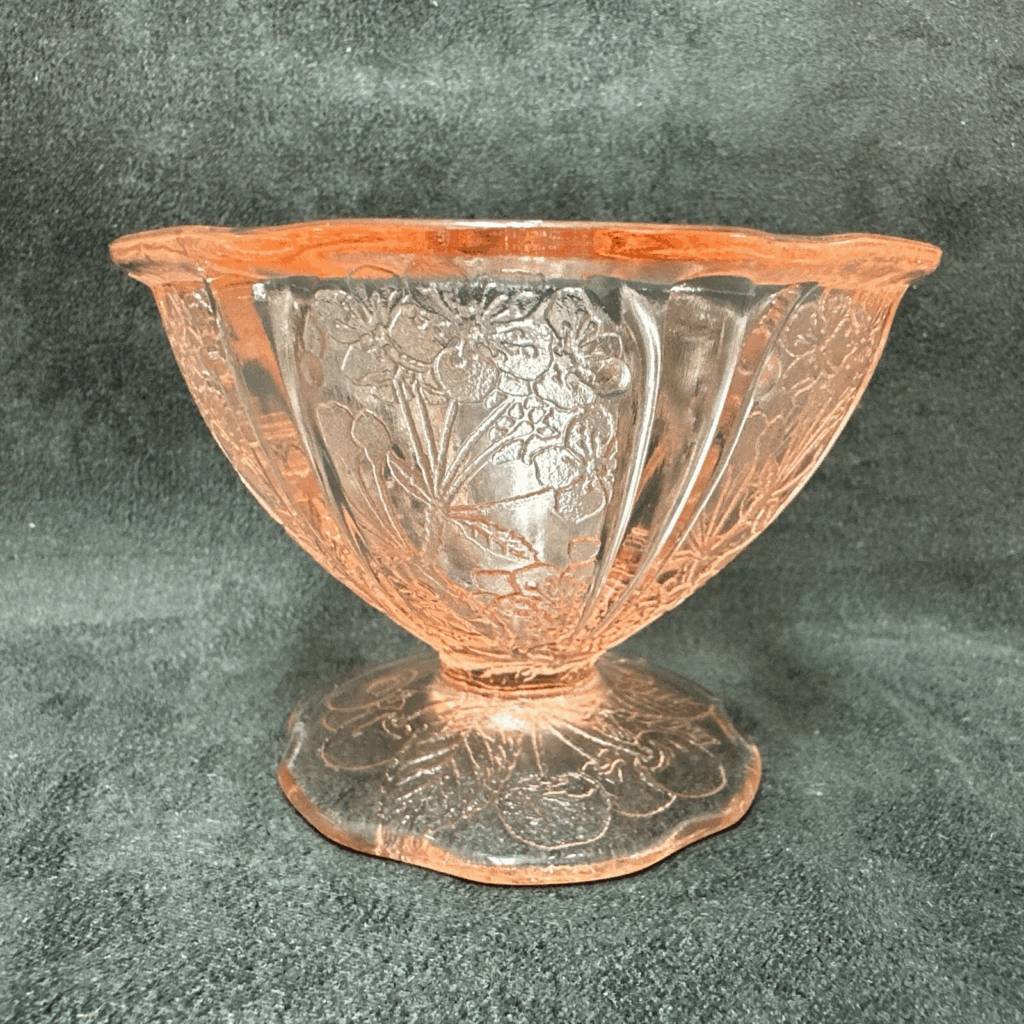
The Cherry Blossom pattern, introduced in the 1930s, is one of Jeannette’s most popular designs. Known for its delicate floral motifs, this design was produced in clear, pink, and green glass. The pieces were often used in everyday household settings and are a reflection of the elegant yet simple design ethos of the era. Today, collectors seek Cherry Blossom glassware for its nostalgia and timeless beauty. The current market value for a complete set can range from $700 to $900, with individual pieces priced between $20 and $50.
This design’s appeal lies in its soft colors and intricate detailing, making it a favorite among collectors. The pattern features clusters of flowers and small leaves, all elegantly etched onto the glass. Cherry Blossom was not just a decorative pattern; it also provided practical household items such as bowls and dinnerware. Despite its age, the pattern still holds strong popularity in the vintage glass community. The value of individual pieces varies depending on rarity, color, and condition.
Jeannette Glass Adam
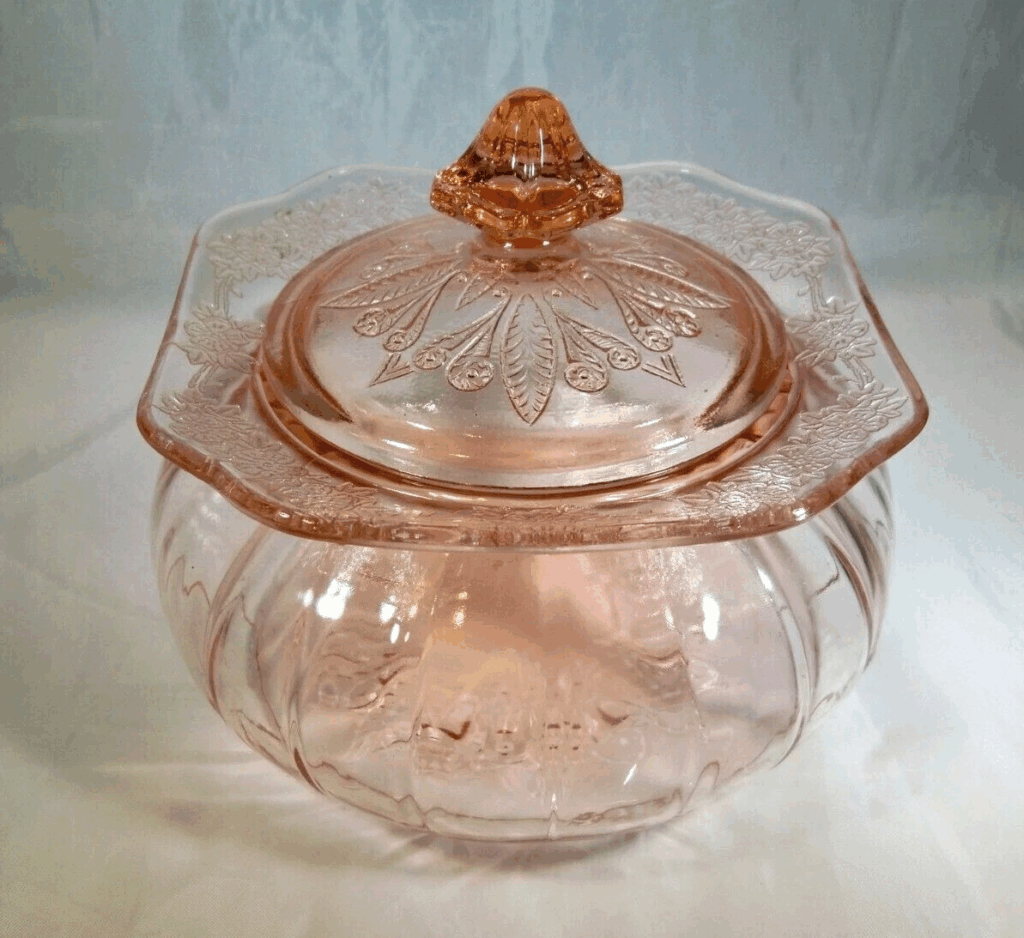
The Adam pattern, first introduced in the 1930s, is characterized by its floral and scroll detailing on a smooth surface. This pattern was produced in soft shades of pink and clear glass, making it a versatile and elegant choice for the era. It became known for its classic appeal and was a common feature in households during the Depression years. Pieces from this set are still in high demand among collectors today. Current market values for individual pieces typically range from $10 to $50.
The Adam pattern’s design has a subtle beauty that blends easily into various home styles. It features rounded edges with gentle floral embellishments, giving it a timeless charm. While the pieces are not as intricate as some other patterns, their simplicity is what makes them appealing. A full set of dinnerware, in good condition, can be found for prices closer to $300. It remains one of Jeannette Glass’s most enduring designs.
Jeannette Glass Windsor
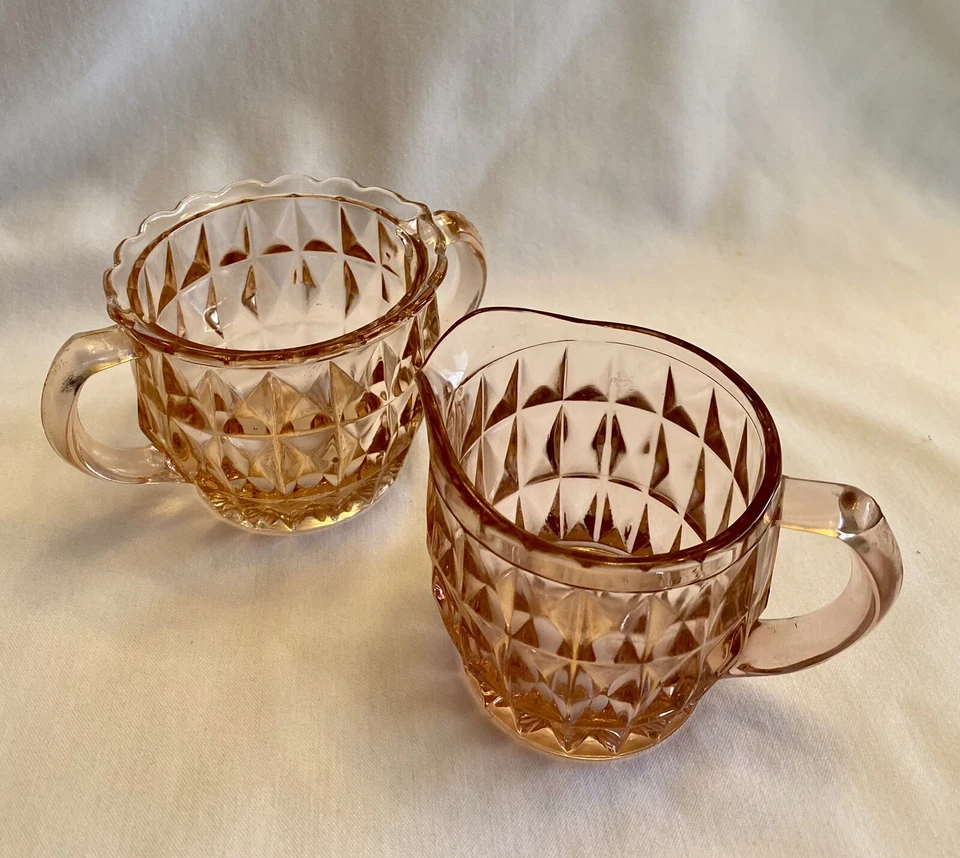
Windsor glassware was produced during the 1930s and 1940s and is known for its intricate geometric and floral patterns. This set was available in colors like clear, green, and pink, offering versatility for different interior decors. The detailed etchings on the glass were designed to catch and reflect light, making these pieces visually striking. Windsor pieces are sought after by collectors for their beauty and rarity. The market price for Windsor pieces varies, with a 9 dinner plate set priced around $30.
This pattern’s intricate detailing makes it stand out from other designs of the same era. It blends Art Deco influences with more traditional styles, making it a unique piece of history. Windsor glassware was produced in a variety of shapes, from small bowls to larger platters. Collectors appreciate the pattern’s craftsmanship, and prices for rare pieces can reach higher values, depending on their condition. A full set of Windsor glassware can fetch around $300 in good condition.
Jeannette Glass Floragold Louisa
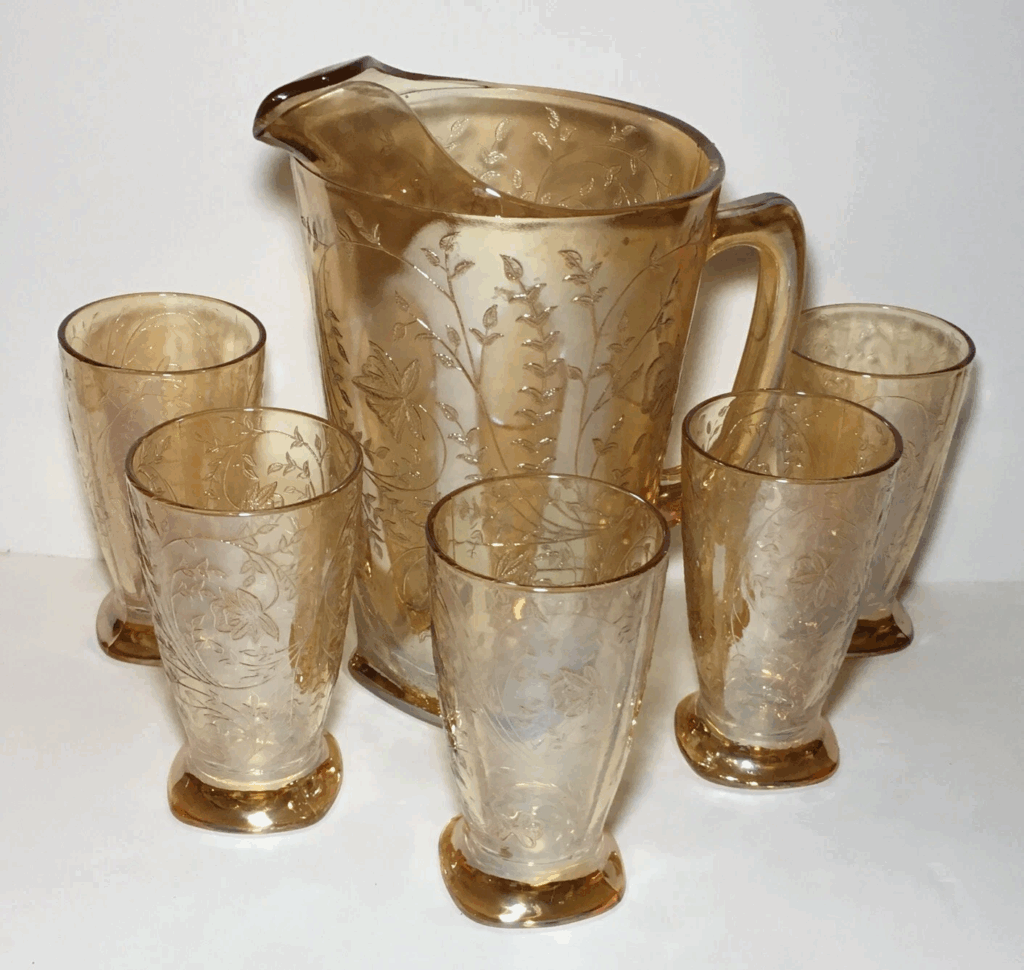
The Floragold Louisa pattern, produced in the 1950s, features a stunning marigold finish with a floral design. Known for its iridescent color, Floragold Louisa is one of Jeannette’s most sought-after mid-century patterns. The collection was popular in American homes for both its decorative appeal and its practical use. A large 11 and one-half inch ruffled bowl in this pattern is priced around $32 today. The soft golden hue of Floragold gives it an unmistakable vintage charm.
Pieces from this pattern are still highly collectible, especially those in excellent condition. The iridescent finish reflects light beautifully, adding to the visual appeal of each item. Floragold Louisa was part of Jeannette’s post-Depression offerings, showing the company’s ability to blend tradition with new techniques. While common items can be affordable, rarer pieces, such as serving platters, can command higher prices. Floragold Louisa remains a favorite for collectors of mid-century glassware.
Jeannette Glass Cube or Cubist
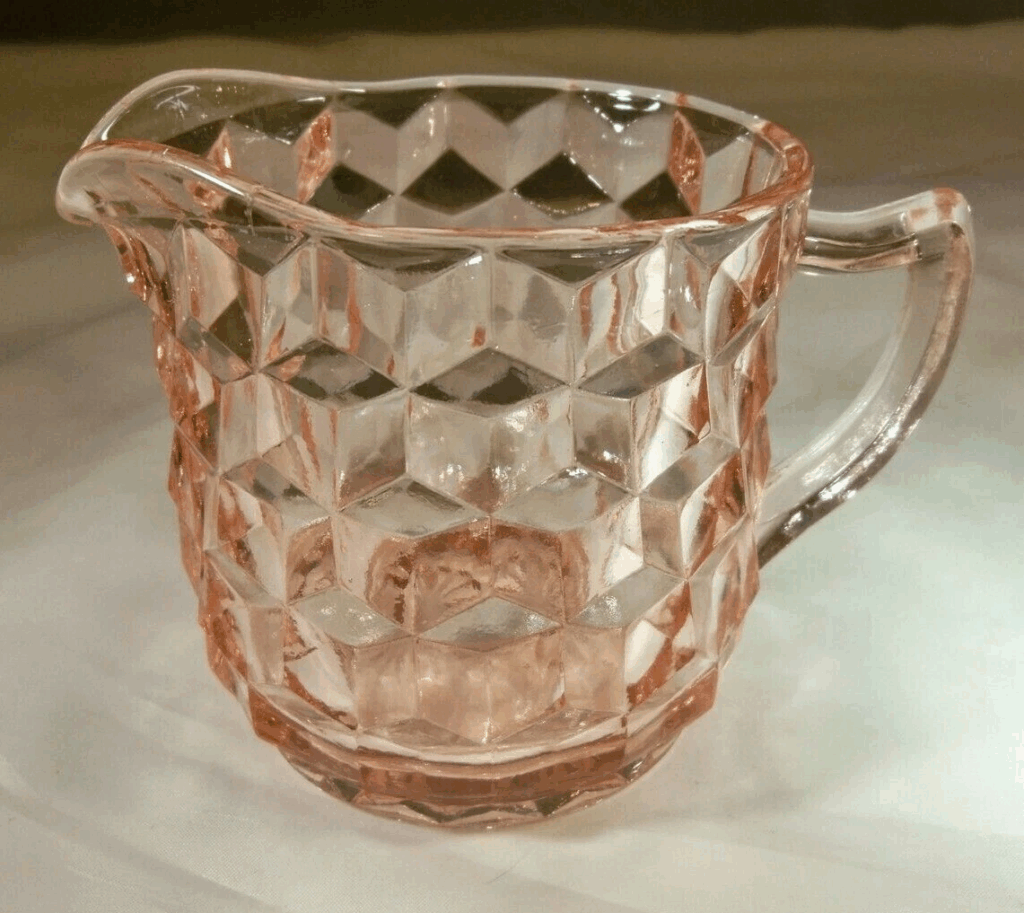
The Cube pattern, also known as Cubist, was produced from 1929 to 1933 and is famous for its bold geometric design. It features stepped cubes that create a modern, angular look, setting it apart from other designs of the era. Available primarily in clear glass, the Cube pattern represented Jeannette Glass’s departure from floral designs in favor of a more contemporary aesthetic. Today, Cube pieces are highly collectible, especially in good condition. The market price for a butter dish from this line is around $20.
This design reflects the growing popularity of Art Deco and modernist influences in the late 1920s and early 1930s. The geometric simplicity of Cube makes it an iconic example of the era’s shift toward minimalism. Despite its relatively short production run, the Cube pattern’s distinct style has helped it maintain a dedicated following. It is considered one of Jeannette Glass’s more modern and progressive designs. Collectors appreciate it for its uniqueness and the challenge of finding original pieces.
Jeannette Glass Iris and Herringbone
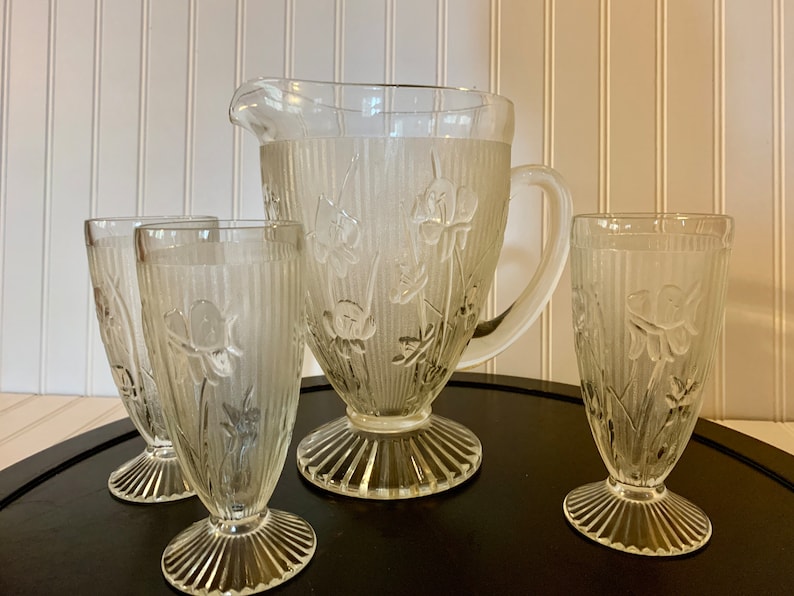
Iris and Herringbone is one of Jeannette’s most enduring patterns, produced from 1928 to 1932. This design features a blend of intricate floral iris motifs and the geometric herringbone pattern. It was primarily made in clear, pink, and green glass, making it versatile and suitable for various home decors. A footed pitcher from this collection is worth approximately $14 today, though prices for larger items like bowls can be higher. The combination of flowers and geometric lines continues to appeal to collectors.
This pattern remains a symbol of the elegance of the early 20th century, blending both organic and geometric elements. The floral iris design adds softness, while the herringbone pattern creates a structured contrast. As a result, Iris and Herringbone pieces were highly valued in American households during the Depression. Collectors continue to seek pieces from this pattern due to its historical significance and distinctive style. Its market value varies, with rarer pieces reaching higher prices.
Jeannette Glass Doric and Pansy
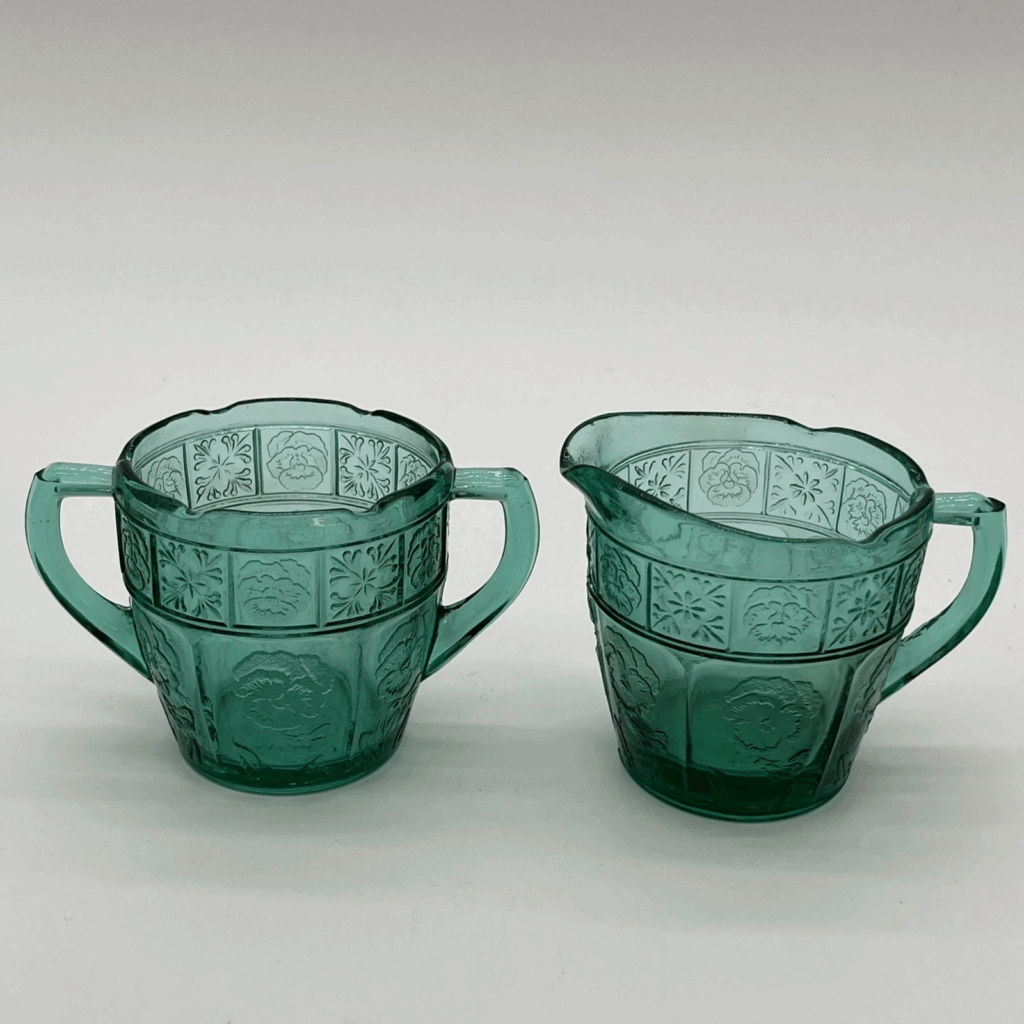
Doric and Pansy, introduced in the 1930s, is a charming design that blends classical Doric column motifs with beautiful pansy flowers. The pattern features a lovely combination of floral and architectural elements, making it unique for its time. Available in clear and colored glass, Doric and Pansy became a favorite for collectors of vintage glassware. Prices for a 9 dinner plate set from this pattern can be around $30 today. Its distinctive look and intricate detailing have kept it popular among glass collectors.
The Doric and Pansy pattern showcases Jeannette Glass’s ability to combine classic influences with fresh, decorative designs. The design’s balance between soft floral elements and structured patterns made it a versatile addition to many homes. While the pattern was not as widely produced as others, it remains highly sought after by collectors today. Pieces such as bowls and plates are priced based on rarity and condition, with more common items costing around $20. The uniqueness of Doric and Pansy keeps it relevant in the vintage glassware market.
Jeannette Glass Doric
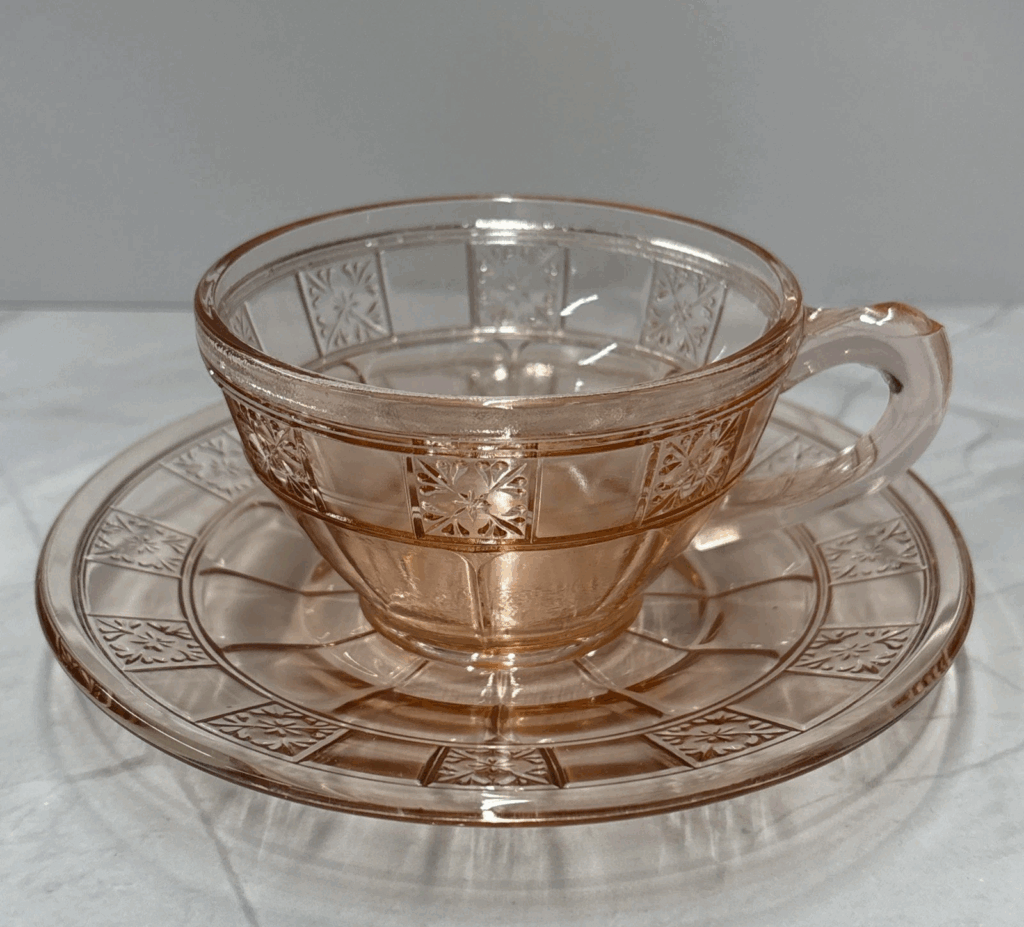
The Doric pattern, introduced during the 1930s, is another example of Jeannette Glass’s mastery in creating beautiful, functional glassware. This pattern features fluted detailing, giving each piece an elegant, textured finish. It was produced in both clear and colored glass, with pink being a popular choice. Collectors value the simplicity and beauty of Doric, and a set of 9 dinner plates can be priced around $30 today. Its enduring popularity is a testament to its timeless design.
Doric’s simplicity makes it adaptable to various home settings, from casual to formal dining environments. The gentle fluted edges and smooth surface give it a soft, refined appearance. Despite its straightforward design, Doric glassware has become a staple among collectors who appreciate its understated beauty. Though it was produced in large quantities, certain rarer pieces still fetch a premium. Prices for rarer pieces can reach up to $50, depending on their condition.
Jeannette Glass Poinsettia
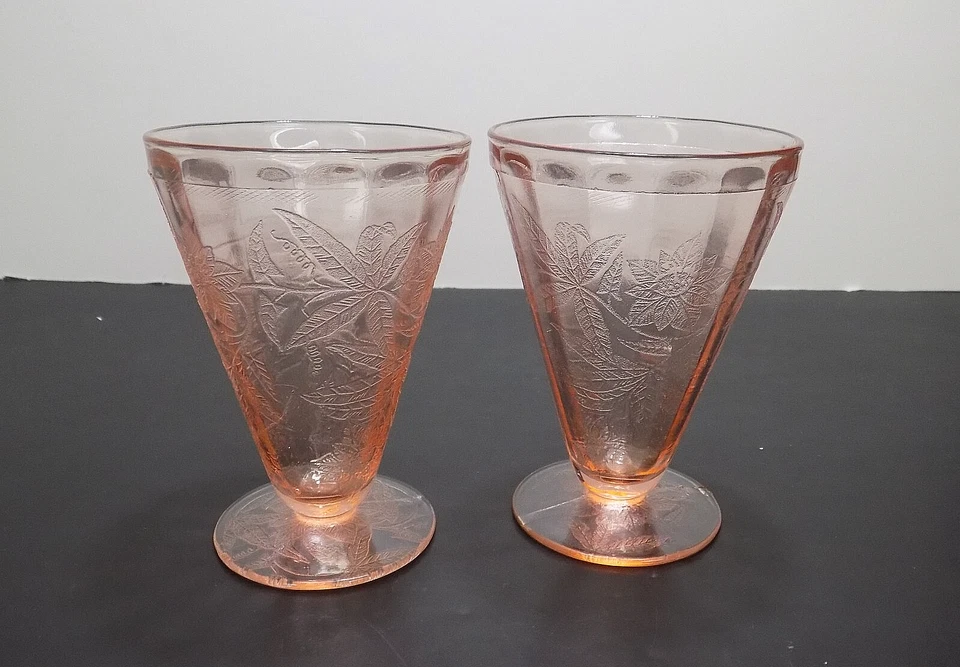
Poinsettia glassware, produced in the 1950s, features a striking floral design with a textured surface. The pattern was popular during the holiday season, as the poinsettia flower is a symbol of Christmas. Poinsettia was available in a variety of colors, including red, green, and crystal. Prices for individual pieces, like a small dish or bowl, range from $10 to $30. Its festive design continues to make it a favorite among collectors of holiday glassware.
The Poinsettia pattern stands out for its rich detailing and seasonal appeal. The flowers are carefully etched onto the glass, giving the pieces a tactile, raised texture. These items were often used as part of holiday table settings, making them part of cherished traditions. Although most pieces were produced in relatively high quantities, their continued popularity ensures that they remain valuable. A set of Poinsettia glasses can sell for as much as $100 depending on the pieces included.
Jeannette Glass Sunflower
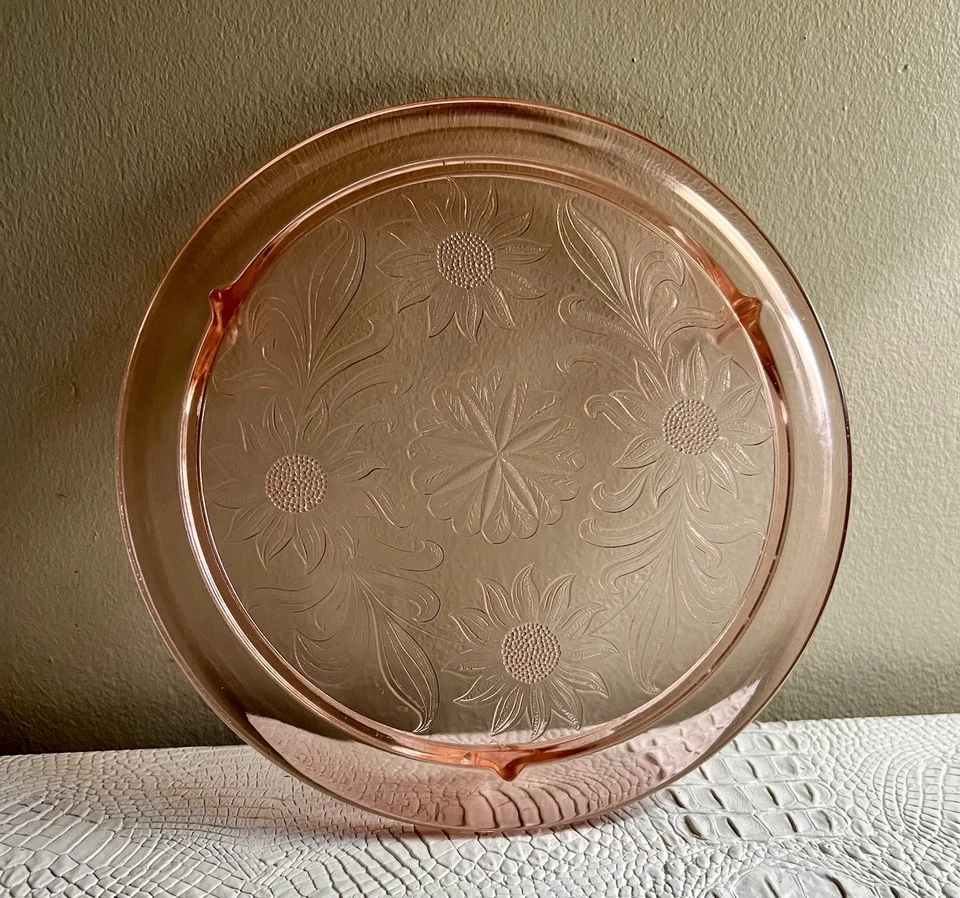
The Sunflower pattern, produced in the 1930s and 1940s, is beloved for its large, bold sunflower design. This pattern was made in vibrant colors like amber, green, and pink, giving it a striking presence in any home. Sunflower glassware was commonly used during family meals, adding a touch of beauty to everyday occasions. A 32 oz pitcher from this set is valued at approximately $90 today. The design’s boldness and simplicity make it appealing to both casual collectors and serious glassware enthusiasts.
Sunflower glassware stands out due to its size and the beauty of the central sunflower motif. The petals and seeds of the flower are skillfully etched onto the glass, giving each piece a textured finish. This design captures the essence of the era, blending function with elegance. The vibrant colors, especially the amber glass, are particularly sought after by collectors. Sunflower glassware remains a prominent part of Jeannette’s legacy, continuing to inspire collectors and decorators alike.
Jeannette Glass Shell Pink
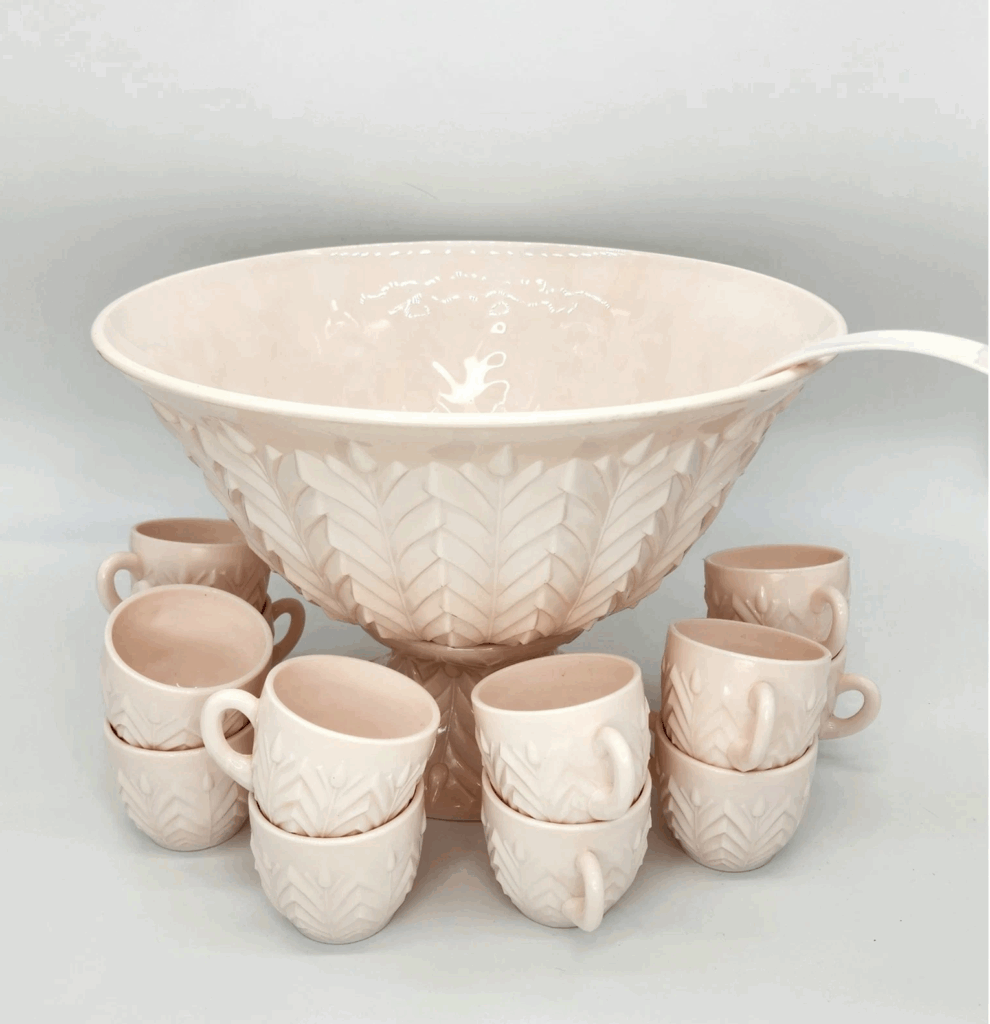
Shell Pink, produced in the 1950s, is one of Jeannette’s most iconic milk glass patterns. The soft pink color and elegant, smooth finish make it a favorite among vintage glassware collectors. Shell Pink was often used for everyday dishes, but also became popular for special occasions due to its refined appearance. The current market price for a large oval tray is around $45, depending on its condition. The pieces from this line are highly collectible due to their widespread appeal during the mid-century period.
The appeal of Shell Pink lies in its simplicity and versatility. It is often praised for how it can seamlessly blend into various home settings, adding a soft, delicate touch. Despite its simplicity, the durability and timeless color of Shell Pink have ensured its place in the vintage glassware market. It was a staple in many American households, especially for those who valued understated elegance. Collectors continue to search for high-quality, well-preserved pieces, driving the demand for Shell Pink glassware.
Jeannette Glass Aztec Rose
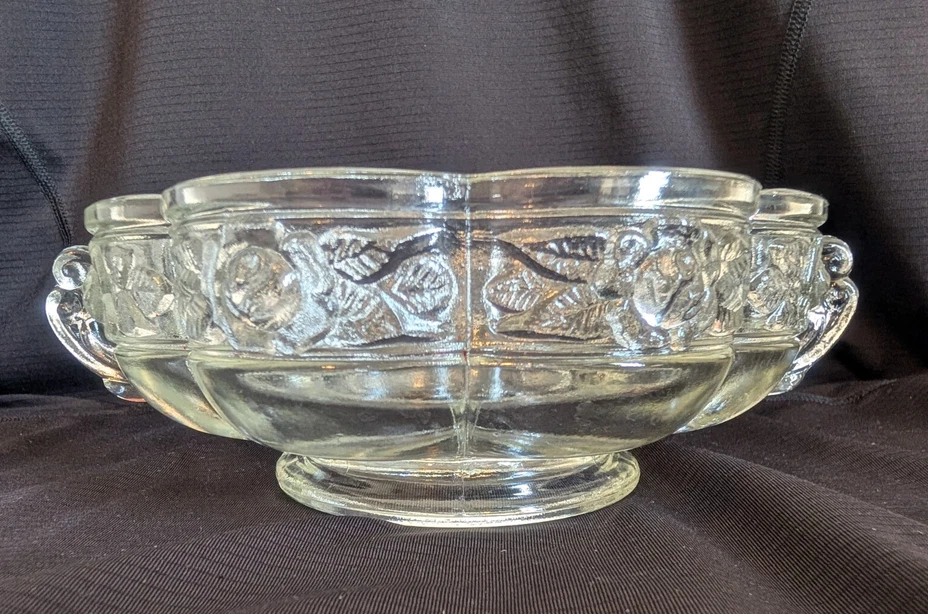
Aztec Rose, introduced in the 1950s, features a geometric rose design set in marigold iridescent glass. The design was innovative for its time, combining floral elements with a modern geometric framework. Aztec Rose pieces were mostly produced in this stunning iridescent finish, giving them a vivid and radiant look. A small double-handled dish from this pattern is valued at around $18 today. Despite the passage of time, Aztec Rose glassware remains a favorite among collectors due to its unique beauty.
The marigold finish gives Aztec Rose its distinctive glow, and the geometric floral design provides a balance between modern and classic. The pattern was part of Jeannette’s post-Depression offerings, showcasing the company’s adaptability and creative vision. Pieces from this pattern are highly collectible, especially in good condition. The rarity of certain items, such as large serving dishes, can significantly increase their market value. Aztec Rose remains a symbol of mid-century innovation and elegance in glassware design.
Jeannette Glass Harp
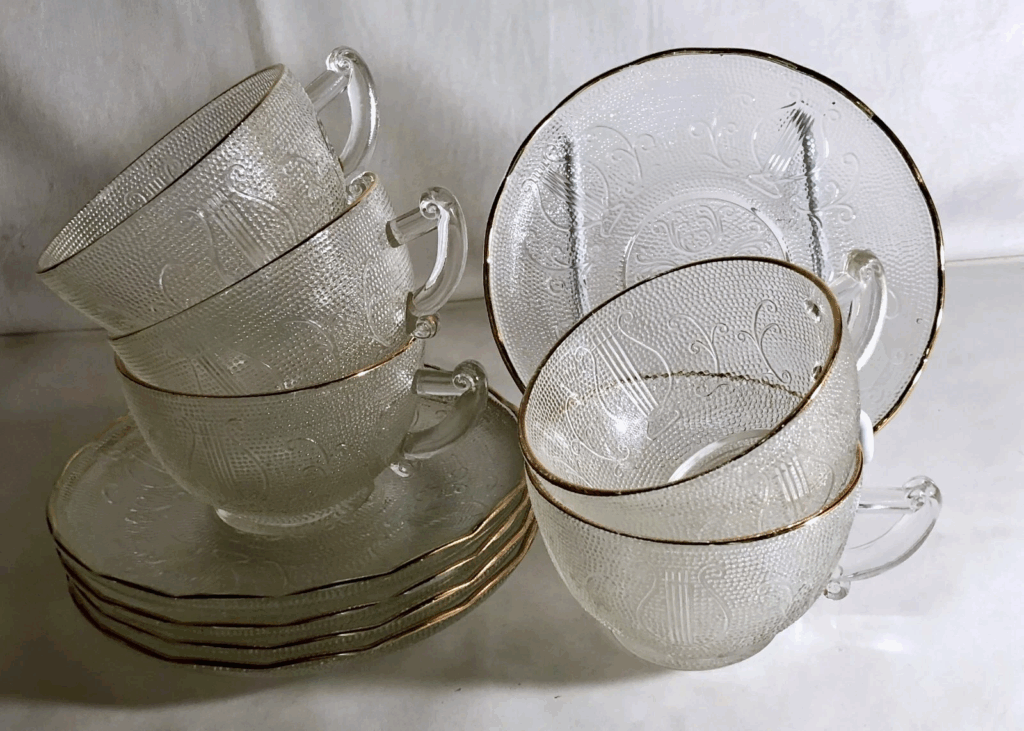
The Harp pattern, produced during the 1940s and 1950s, is known for its unique harp design, which is etched into the glass. This pattern was produced in several colors, including pink, green, and crystal, offering a variety of options for consumers. The elegant harp motif, along with the smooth, curved lines of the design, made it a favorite for formal occasions. A 9 dinner plate set from the Harp pattern typically sells for around $30. Its understated beauty and intricate design make it a prized possession for vintage glassware collectors.
The Harp pattern is often recognized for its refined and delicate appearance, combining geometric and organic elements. The harp motif is beautifully etched into the glass, adding texture and depth to each piece. Although it was produced in high quantities, certain rarer pieces such as large serving bowls or platters can fetch higher prices. Collectors are drawn to its timeless design and historical significance. Harp glassware continues to be a symbol of mid-century American elegance and craftsmanship.
This article originally appeared on Avocadu.
